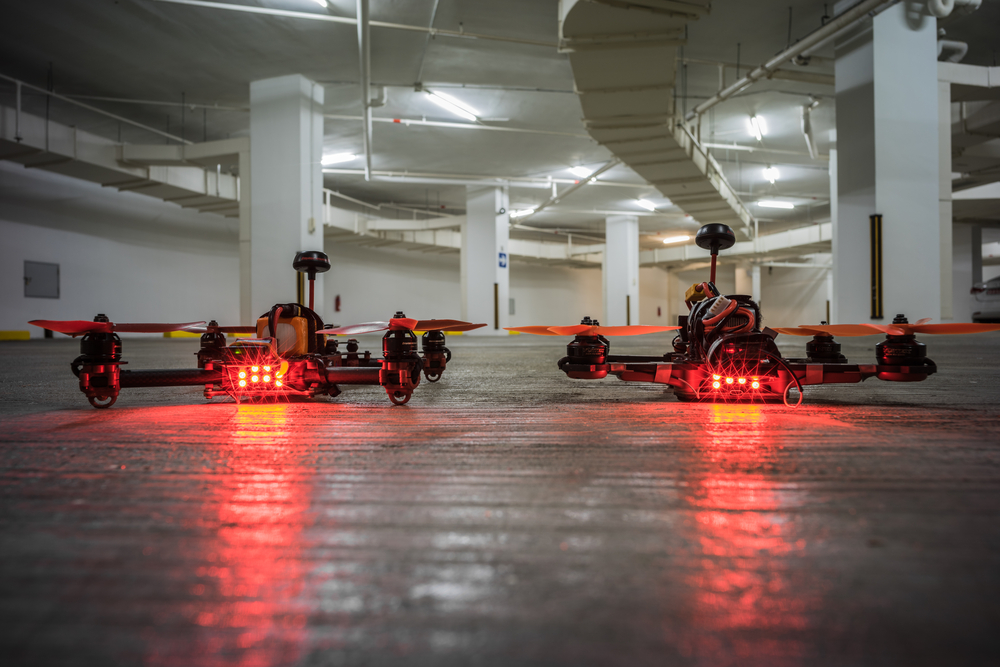Drone racing has become an incredibly popular trend all over the world. Although the concept is still very novel to a lot of people, there are quite a few intriguing facts about drone racing. It is important to pay attention to these emerging trends, as this type of sport will not go away anytime soon. There is a lot to learn when it comes to racing with tiny flying vehicles, that much is certain.
5. These Are Not Consumer-Grade Quadcopters
One of the primary things to keep in mind his how there is a tangible difference between racing drones and consumer-grade quadcopters. The latter category of devices is used for video and photography, whereas racing drones strips away a lot of those features in favor of making them more agile and faster. While the average consumer-grade quadcopter may appear to zip by in a heartbeat, racing drones achieve much higher speeds. Moreover, these drones can stay in the air a lot longer compared to quadcopters with 10 minutes of flight time.
4. Drone Modification is Critical
There are two possible options to venture into the world of drone racing. Either one buys a pre-assembled drone, which allows for next to no modification and improvements, or one creates his own racing drone. Building a powerful drone for racing purposes require a lot of time, research, and experience with these types of devices in general. However, for anyone who wants to race drones on a competitive level, modifying the device to suit your individual racing needs is of the utmost importance.
3. Three Main Drone Racing Types
There is a lot more to drone racing than just flying around in circles. Three “official” racing categories have been established so far. Rotorcross is perhaps the most challenging option for beginners, as it revolves around multiple drones passing a specific course as quickly as possible. Do not be mistaken in thinking this mode is not challenging, though, as it requires significant skills to beat your competitors.
Drag racing, on the other hand, is the simplest competition. The whole race relies on acceleration and top speed. There is also the Time Trial option, which heavily relies on maneuverability and speed. Time trials are not for the faint of heart, though, as these brief races are by far the most intense ones drone racers will ever encounter.
2. Safety First!
No one will be surprised to learn drone racing is quite a dangerous venture unless one takes the necessary precautions. Racing drones are not lightweight by any means, as they can cause severe injuries when coming into contact with living organisms. Racing in public places is a clear no-go, as the risk of injuring others is far too large. Moreover, most public areas banned the use of racing drones.
Moreover, there are a lot of technical issues that may arise at any given time. Different race competitors using the same channel to control their drone will ultimately result in something going amiss. Drone Li-Po Cells are the most dangerous components, which need to be kept safe from overcharging. It would not be the first time a damaged or overcharged drone battery explodes. Last but not least, never catch a landing drone, as it needs no further explanation as to why it not an advisable course of action.
1. So many Different Racing Leagues
Even though drone racing has only been around since 2014, many different racing leagues have been established all over the world. Among the popular leagues are Game of Drones, Aerial Grand Prix, Fight Club, and RacingFPV. All of these leagues have their own set of requirements and rules, ensuring there is something for everyone to enjoy. One thing’s for sure: drone racing is taking off in Europe and the US, whereas other parts of the world are slightly behind the curve.
If you liked this article, follow us on Twitter @themerklenews and make sure to subscribe to our newsletter to receive the latest bitcoin, cryptocurrency, and technology news.

